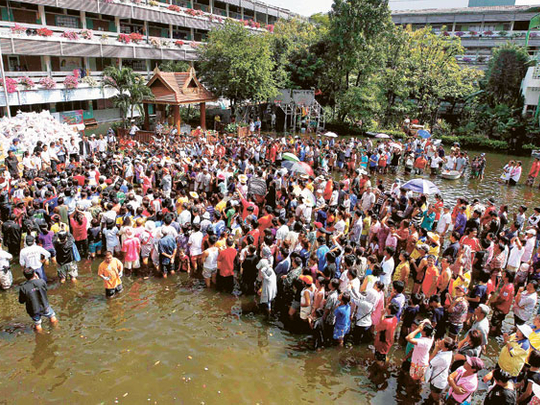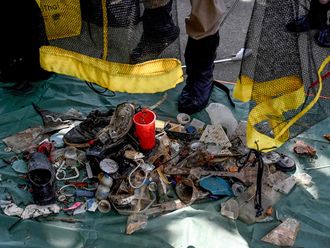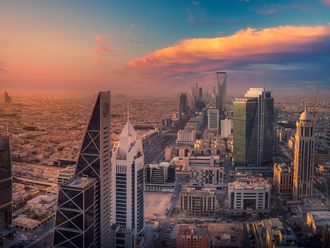
Bangkok: Advancing pools of filthy water threatened the Thai capital's subway system on Monday and surrounded the emergency headquarters set up to deal with flooding that has claimed more than 500 lives nationwide.
Bangkok Governor Sukhumbhand Paribatra has ordered evacuations in 11 of Bangkok's 50 districts, and partial evacuations apply in seven more, as the huge runoff from monsoon-buffeted central Thailand seeps south through the metropolitan area to the sea.
The evacuations are not mandatory, and most people are staying to protect homes and businesses. But the orders illustrate how far flooding has progressed into the city and how powerless the government has been to stop it.
The latest district added to the list on Sunday was Chatuchak, home to a large public park and an outdoor shopping zone that is a major tourist attraction. The Chatuchak Weekend Market was open over the weekend, but had fewer-than-normal vendors and customers, as floodwaters poured past the market's eastern edge.
Chatuchak, just a few kilometres north of Bangkok's still-unaffected central business zone, also is home to the government's national emergency flood relief headquarters. It is housed in the Energy Ministry — a building now surrounded by water.
The relief headquarters moved several days ago out of Bangkok's Don Muang airport after it, too, was flooded.
Relentless rainfall has pummelled vast swathes of Thailand since late July, swamping the country and killing 506 people, according to the latest government statistics. Most victims have drowned, while a handful died from flood-related electrocutions.
No deaths have been reported in Bangkok. The nearby province of Ayutthaya, which has been submerged for more than a month, has the highest toll with 90 reported dead.
Floodwaters have begun receding in some provinces north of the capital, and a major cleanup is planned in Ayutthaya this week. But the runoff has massed around Bangkok and completely submerged some of the city's outer neighbourhoods.
Barricaded
On Sunday, cars sloshed through a flooded road underneath Chatuchak's Mo Chit Skytrain station, the northernmost stop on the capital's elevated train system. Floodwaters also reached roads at three subway stops in northern Bangkok. Both mass transit networks are functioning normally, though some exits have been barricaded and closed.
Also in Chatuchak, water has begun approaching a main road near the Mo Chit bus terminal, a major gateway to northern Thailand. The bus station and roads in the area remained open, traffic police chief Uthaiwan Kaewsa-ard said.
On Friday, workers completed a 6 km flood wall made from massive, hastily-assembled sandbags to divert some of the water flowing toward central Bangkok.
But large amounts of water are already beyond that wall, and officials say that besides a network of canals and underground drainage tunnels, there are no more barriers preventing water from pushing south into the heart of the city.
Over the past two decades, Bangkok's much enlarged and improved drainage system has increasingly been able to siphon off water during monsoon seasons with average rainfall.












